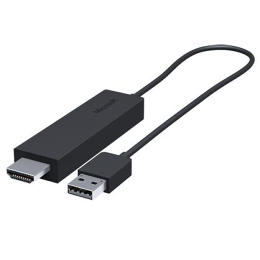How The Smartphone Era Led To The Death of Open Standards
When the PC was king, Microsoft could crown industry standards. But in the Apple-Google duopoly, there’s little room for interoperability.
We can thank the near universal adoption of Wi-Fi and Bluetooth for the explosion of devices that can talk to each other, no wires required. The dream of being able to control our worlds from a smartphone (or smartwatch) makes progress with every new smart lock, fitness wearable, food freshness monitor, and car status tracker.
But the dream is incomplete. What we’re evolving towards is a sea full of islands—gadgets that can communicate back to a smartphone but have little awareness of each other. There have been several attempts to bridge them, including APIs, a few hubs aimed at enthusiasts, and the service IFTTT. But overall, connectivity remains fractured, and there’s no reason to think that an industry-wide standard will fix things anytime soon.
Back in the days when the tech industry revolved around the PC, Microsoft wielded enormous power, and established or supported many standards that were designed to help objects connect with each other. It developed the Universal Plug and Play network discovery protocol and was an early backer of DLNA, a set of guidelines for streaming media around the home. These standards generally saw broad adoption. But there was usually a notable exception—Apple—which chose to go its own way with proprietary approaches such as the networking technology Bonjour.

Today, Microsoft continues to support broad industry standards for getting devices to communicate with each other. It has backed MirrorLink, a system for projecting a phone’s display to a car’s in-dash display and Miracast, an initiative of the Wi-Fi Alliance for sending video to a TV. It is also a member of the AllSeen Alliance, an ambitious Internet of Things coalition to unite the islands of connected devices. And as before, Apple has stood off to one side, focusing on its own efforts such as CarPlay, AirPlay, and HomeKit.
However, as Android’s success has led to Google becoming a major player in consumer electronics, it too has increasingly chosen to go its own way. Google’s approach for linking Android phones to cars is Android Auto. Its approach for sending video from mobile devices to TVs is Google Cast. And at the company’s I/O conference, it introduced its own initiatives for linking everyday objects, including an operating system called Brillo and a communication layer dubbed Weave.
Combined with Apple’s strong strong presence in the mobile market, the prevalence of Android and Google’s support of it have allowed these ecosystem-backed initiatives to carry great weight. There have been far more Apple TVs and Chromecasts sold than Miracast adapters (such as the ones offered by Microsoft). And major car manufacturers are lining up to support both CarPlay and Android Auto, while MirrorLink has struggled. (A rival standard—SmartDeviceLink—has support from Ford and Toyota.)

Of course, the epic rivalry between Apple and Google ensures that neither will support initiatives backed by the other. So that leaves us with at least three standards vying to become what should be a lingua franca of inter-device communication: Apple’s way, Google’s way, and one or more more neutral approaches promoted by industry groups. Because software and hardware makers are heavily incentivized to support Apple’s and Google’s homegrown and mutually exclusive standards, they may forgo industry-wide standards. Or they may delay introducing products—or skip making them at all—because they don’t want to invest in creating something that won’t be universally supported.
We’re too early in the development of Internet of Things standards to known what impact Apple’s and Google’s initiatives will have. But if smartphones define the post-PC era, the Internet of Things may come to define a more disparate, decentralized post-smartphone era. Smartphones will still play a role—just as PCs continue to matter—but it wouldn’t be a central one from which the dominant companies can dictate standards. That would give industry groups the opportunity to build bridges between at least some of the islands that the smartphone era is creating.
Fast Company , Read Full Story
(47)














